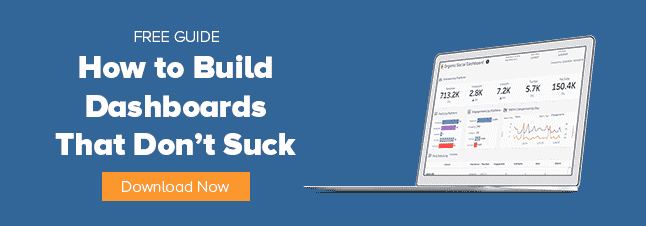Since its initial release in 1985, Microsoft Excel has grown to become a necessity for companies everywhere. It’s the most widely used spreadsheet software among the business community, and has been a robust tool for simple analysis and budgeting.
The problem, however, is that a high percentage of BI and marketing analysts have been incorrectly using it as an ad-hoc database and reporting system rather than for it’s intended purpose. Whether fully realized or not, it’s starting to become a massive problem for many analysts, as data bloat and manual data blending have bogged down the software. This, in turn, ends up making it difficult to gain actionable insights, as well as wastes a considerable amount of time and opportunity cost. It’s a condition we at Alight have diagnosed as Excel Hell.
Sadly, this reliance on Excel results largely from a broad familiarity with the software. Everyone knows Excel and just about everyone is comfortable with it. Thus, it’s commonly used. Yet, despite everyone’s familiarity with it, that doesn’t make Excel a database.
For a number of reasons, a true database is a far better option:
A database connects data tables automatically.
Unlike Excel, database systems allow users to only enter in data once, as it offers the functionality to flow down and tie other records together. As DB Pros explain:
“For example, a Company record can be entered once, and then you can add multiple Contacts that are tied to that Company. This eliminates the need to enter the address, phone number, website URL, etc. more than once. In Excel, if you want a complete list to report on, you must enter that information for each row that includes that Company.”
As Judith Allen notes, data recovery is appreciably easier.
When storing a significant quantity of data in Excel, the program has a habit of slowing down substantially, often to a near crawl (as mentioned above). Databases are designed specifically to handle large datasets, making it relatively easy to recover or find a defined and specific data point in short order.
Databases can be edited by multiple people in real-time.
Having multiple users interacting and changing a database at the same time is a huge benefit. It increases efficiency and saves a ton of time. This reason alone makes databases a substantially better option. Excel, in theory, does offer this feature through its cloud-based OneDrive system. However, not only is it a highly watered down version of Excel desktop, it still hasn’t been widely adopted throughout the business community.
This is by no means an exhaustive list, but it should provide convincing evidence as to why Excel should not be used as a database.
BLOG: What’s a Data Warehouse? A Guide for Marketers
If you’re feeling really ambitious and want to truly maximize your analytics capabilities, it might be worth considering a data warehouse. According to Oracle, in essence, it’s a relational database, which is used for query and analysis as opposed to transactional processing—the customary purpose of traditional database systems.
At Alight, we’ve built our ChannelMix platform on top of a data warehouse. Through an automated process we aggregate and integrate all data sources into one packaged set, cleaning it up and delivering it in a report-ready format.
We developed ChannelMix because, like so many out there, we desperately needed to get out of Excel Hell. So, if you want to see what it’s all about, shoot us a note. We’ll give you the lowdown.
Maximize Campaign ROI with a Complete Analytics Solution
Alight’s Media Performance Analytics solution enables marketers to measure and optimize cross-channel campaigns to reduce wasted spend and improve ROI. Schedule a free solution consultation with our team!
